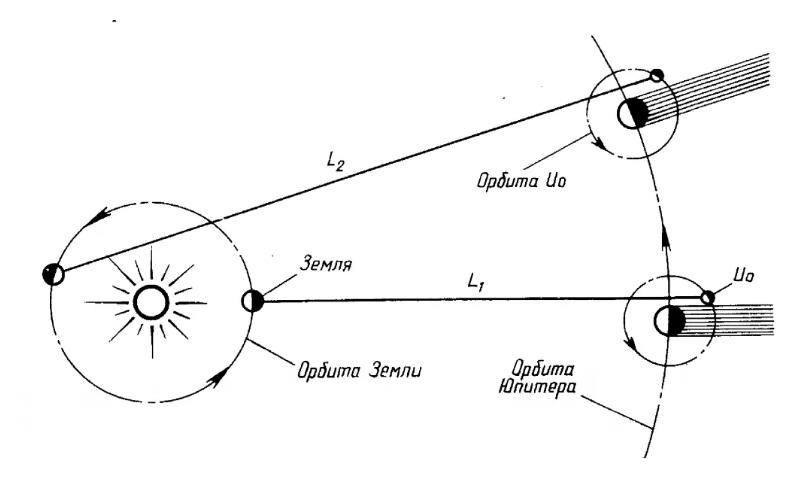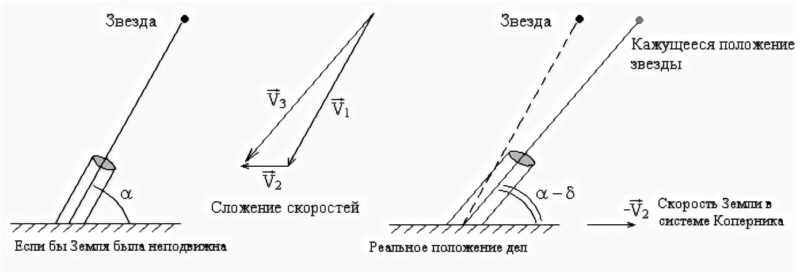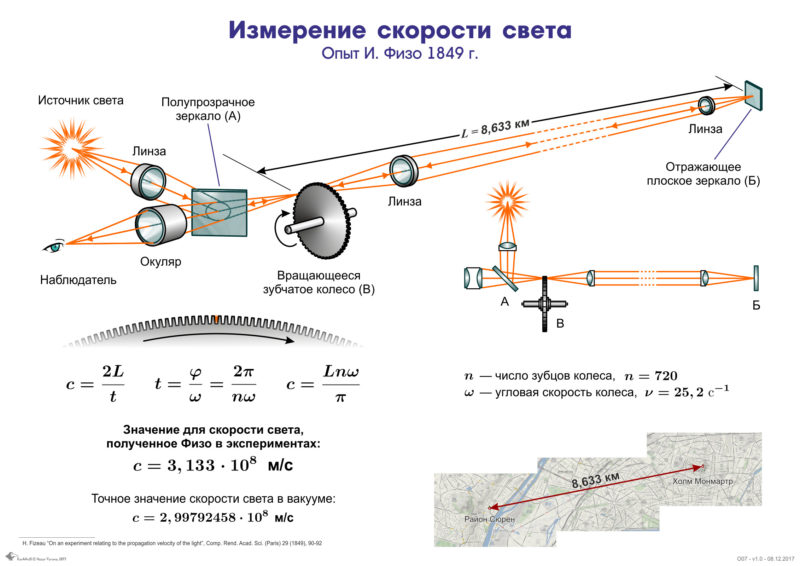At what speed does light propagate in a vacuum
The speed of light in a vacuum is an index that is widely used in physics and at one time allowed a number of discoveries to be made as well as explaining the nature of many phenomena. There are several important points to be studied in order to understand the topic and to understand how and under what conditions this index was discovered.
What is the speed of light
The speed of light in a vacuum is considered an absolute quantity that reflects the rapidity of propagation of electromagnetic radiation. It is widely used in physics and has a designation in the form of a small Latin letter "c" (they say "ce").
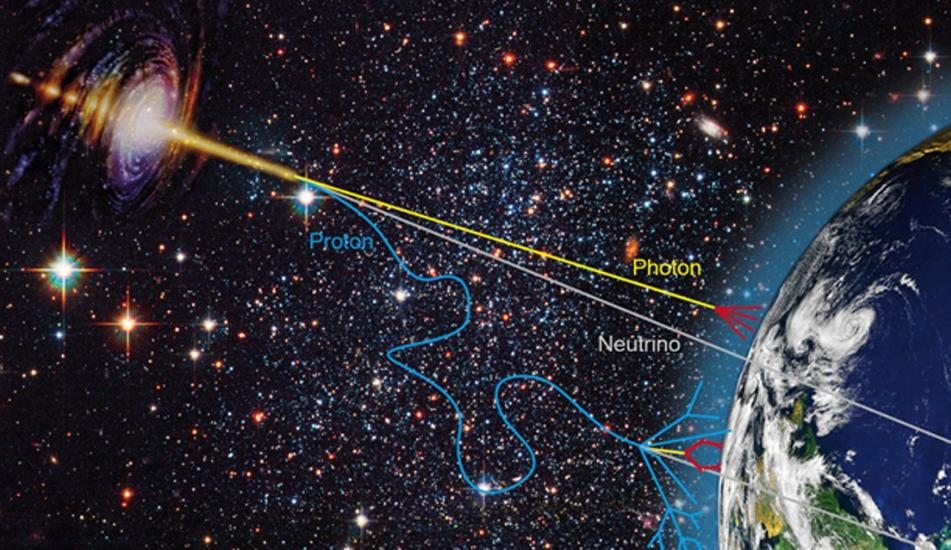
According to most researchers and scientists, the speed of light in a vacuum is the maximum possible speed of motion of particles and the propagation of various types of radiation.
As for examples of phenomena, they are as follows:
- Visible light coming from any source.
- All types of electromagnetic radiation (e.g. X-rays and radio waves).
- Gravitational waves (here some experts disagree).
Many types of particles can move at near-light velocity, but do not reach it.
The exact value of the speed of light
Scientists have tried for many years to determine what the speed of light is, but the exact measurements were made in the 1970s. In the end the figure was 299,792,458 m/s with a maximum deviation of +/-1.2 m. Today, it's an unchanging physical unitsince a distance of one meter is 1/299,792,458 seconds, which is how long it takes light in a vacuum to travel 100 cm.
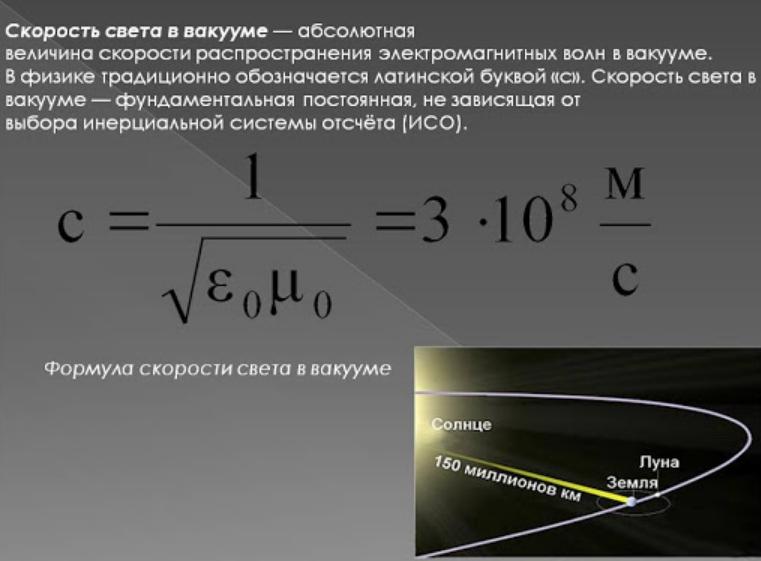
To simplify the calculation, the figure is simplified to 300,000,000 m/s (3×108 m/s). It is familiar to everyone from the physics course at school, that is where the speed is measured in this form.
The fundamental role of the speed of light in physics
This parameter is one of the main ones, regardless of which reference frame is used in the study. It does not depend on the motion of the wave source, which is also important.
The invariance was accepted as a postulate by Albert Einstein in 1905. This came after another scientist, Maxwell, after finding no evidence for the existence of light-carrying ether, advanced the theory of electromagnetism.
The claim that causal influence cannot be carried at a speed greater than the speed of light is now considered quite valid.
By the way! Physicists do not deny that some of the particles can move at a speed greater than the figure in question. But in doing so, they cannot be used to transmit information.
Historical references
To understand the specifics of the topic and learn how certain phenomena were discovered, we should study the experiments of some scientists. Many discoveries were made in the 19th century that helped scientists later on, mostly concerning electric current and the phenomena of magnetic and electromagnetic induction.
James Maxwell's experiments
The physicist's research confirmed the interaction of particles at a distance. This subsequently allowed Wilhelm Weber to develop a new theory of electromagnetism. Maxwell also clearly established the phenomenon of magnetic and electric fields and determined that they could generate each other to form electromagnetic waves. It was this scientist who was the first to use the designation "c," which is still used by physicists around the world today.
Because of this, most researchers were already talking about the electromagnetic nature of light. Maxwell, when studying the speed of propagation of electromagnetic excitations, came to the conclusion that this index is equal to the speed of light, at one time he was surprised by this fact.
Thanks to Maxwell's research, it became clear that light, magnetism, and electricity are not separate concepts. Together, these factors determine the nature of light, because it is a combination of magnetic and electric fields that spread in space.
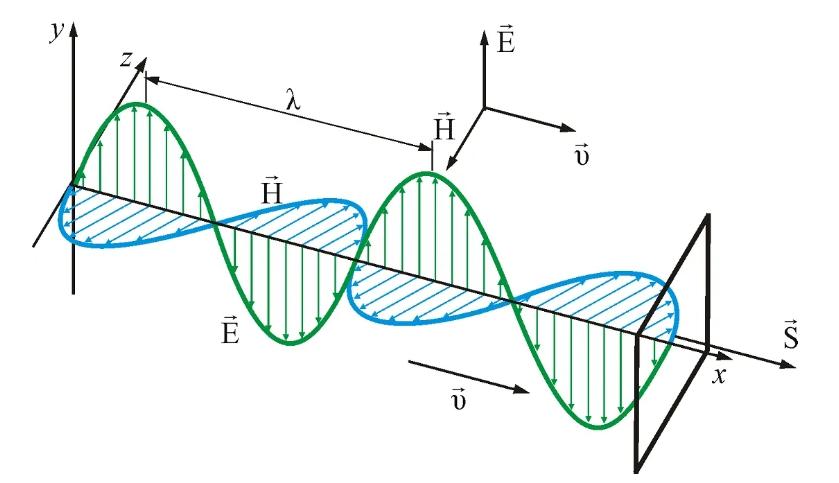
Michelson and his experience in proving the absoluteness of the speed of light
At the beginning of the last century, most scientists used Galileo's principle of relativity, which held that the laws of mechanics were the same no matter which frame of reference was used. But according to the theory, the speed of propagation of electromagnetic waves must change as the source moves. This was contrary to both Galileo's postulates and Maxwell's theory, which was the reason for starting the research.
At that time, most scientists were inclined to the "aether theory," according to which the indicators did not depend on the speed of its source, the main determining factor was considered the peculiarities of the medium.
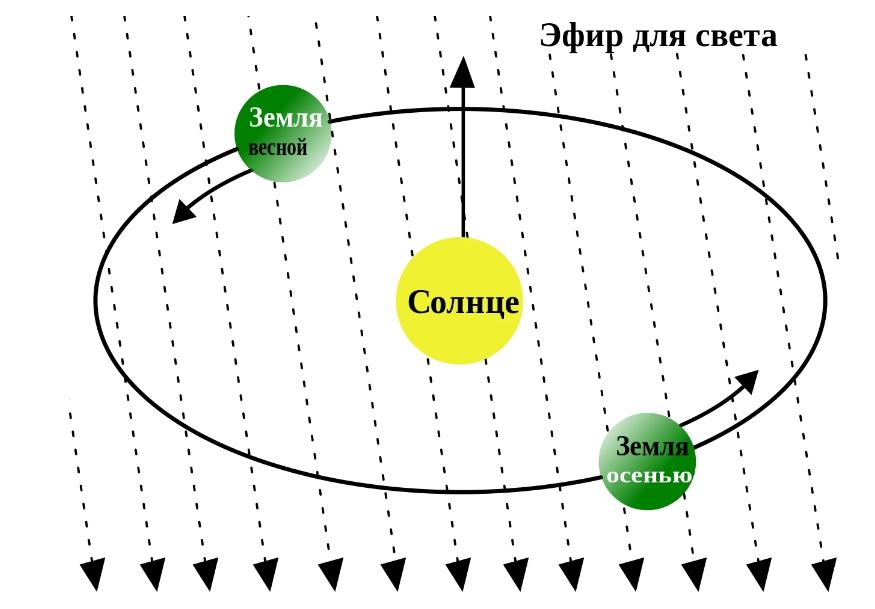
Since the Earth moves in space in a certain direction, the speed of light, according to the law of addition of speeds, will differ when measured in different directions. But Michelson found no difference in the propagation of electromagnetic waves, no matter in which direction the measurements were made.
The theory of ether could not explain the existence of absolute magnitude, which showed even better its fallacy.
Albert Einstein's Special Theory of Relativity
The young scientist at the time presented a theory that went against the beliefs of most researchers. According to it, time and space have such characteristics that ensure the invariability of the speed of light in the vacuum regardless of the chosen frame of reference. This explained Michelson's unsuccessful experiments, since the speed of propagation of light does not depend on the motion of its source.
[tds_council]An indirect confirmation of the correctness of Einstein's theory was the "relativity of simultaneity," its essence shown in the figure.[/tds_council]
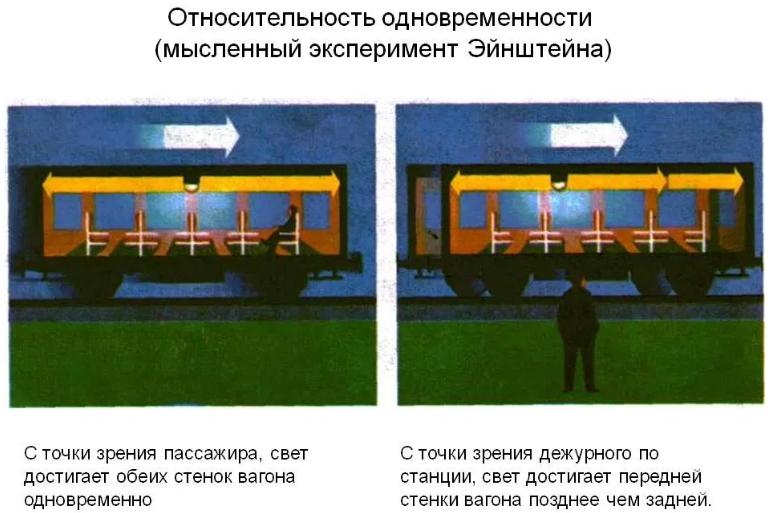
How the speed of light was measured earlier
Attempts to determine this indicator have been made by many, but because of the low level of development of science it was previously problematic to do so. For example, scientists of antiquity believed that the speed of light was infinite, but later many researchers questioned this postulate, which led to a number of attempts to determine it:
- Galileo used flashlights. In order to calculate the speed of propagation of light waves, he and his assistant were on the hills, the distance between which was determined precisely. Then one of the participants opened the lantern, the second was to do the same as soon as he saw the light. But this method failed because of the high speed of wave propagation and the inability to accurately determine the time interval.
- Olaf Remer, an astronomer from Denmark, noticed a peculiarity while observing Jupiter. When the Earth and Jupiter were at opposite points in their orbits, the eclipse of Io (Jupiter's satellite), was 22 minutes behind the planet itself. From this he concluded that the speed of propagation of light waves is not infinite and has a limit. According to his calculations, the index was approximately 220,000 km per second.Determination of the speed of light by Rehmer.
- Around the same period, the English astronomer James Bradley discovered the phenomenon of light aberration, when due to the movement of the Earth around the Sun, as well as due to the rotation around its axis, which causes the position of stars in the sky and the distance to them constantly change. Because of these features, the stars describe an ellipse during each year. Based on calculations and observations, the astronomer calculated the speed, it was 308,000 km per second.The aberration of light
- Louis Fizeau was the first who decided to determine the exact rate through a laboratory experiment. He set up a glass with a mirror surface at a distance of 8,633 meters from the source, but since the distance was small, it was impossible to make accurate time calculations. Then the scientist put a toothed wheel, which with its cogs periodically covered the light. By changing the speed of the wheel Fizeau determined at what speed the light did not have time to pass between the teeth and return back. He calculated a speed of 315,000 kilometers per second.Louis Fizeau's experiment.
Measuring the speed of light
This can be done in several ways. It is not necessary to break them down in detail, each would require a separate review. Therefore, it is easiest to sort out the varieties:
- Astronomical measurements.. This is where the Remer and Bradley methods are most often used, since they have proven to be effective and the values are not affected by the properties of air, water and other features of the environment. In a space vacuum, the accuracy of the measurements increases.
- Cavity resonance or cavity effect - is the name given to the phenomenon of low-frequency standing magnetic waves occurring between the surface of the planet and the ionosphere. Using special formulas and data from measuring equipment, it is not difficult to calculate the value of particle velocity in the air medium.
- Interferometry - a set of methods of research, in which several types of waves are added together. This gives the effect of interference, due to which numerous measurements of both electromagnetic and acoustic vibrations can be made.
With the help of special equipment it is possible to make measurements without using special techniques.
Is FTL possible
According to the theory of relativity, exceeding the velocity of physical particles violates the principle of causality. Because of this, the transmission of signals from the future to the past and vice versa is possible. But at the same time the theory does not deny that there may be particles that move faster, while they interact with ordinary substances.
This type of particles is called tachyons. The faster they move, the less energy they carry.
Video lesson: The Fizeau experiment. Measuring the speed of light. Physics 11th grade.
The speed of light in a vacuum is a constant and many phenomena in physics are based on it. Its definition was a new milestone in the development of science, because it allowed to explain many processes and simplified a number of calculations.
